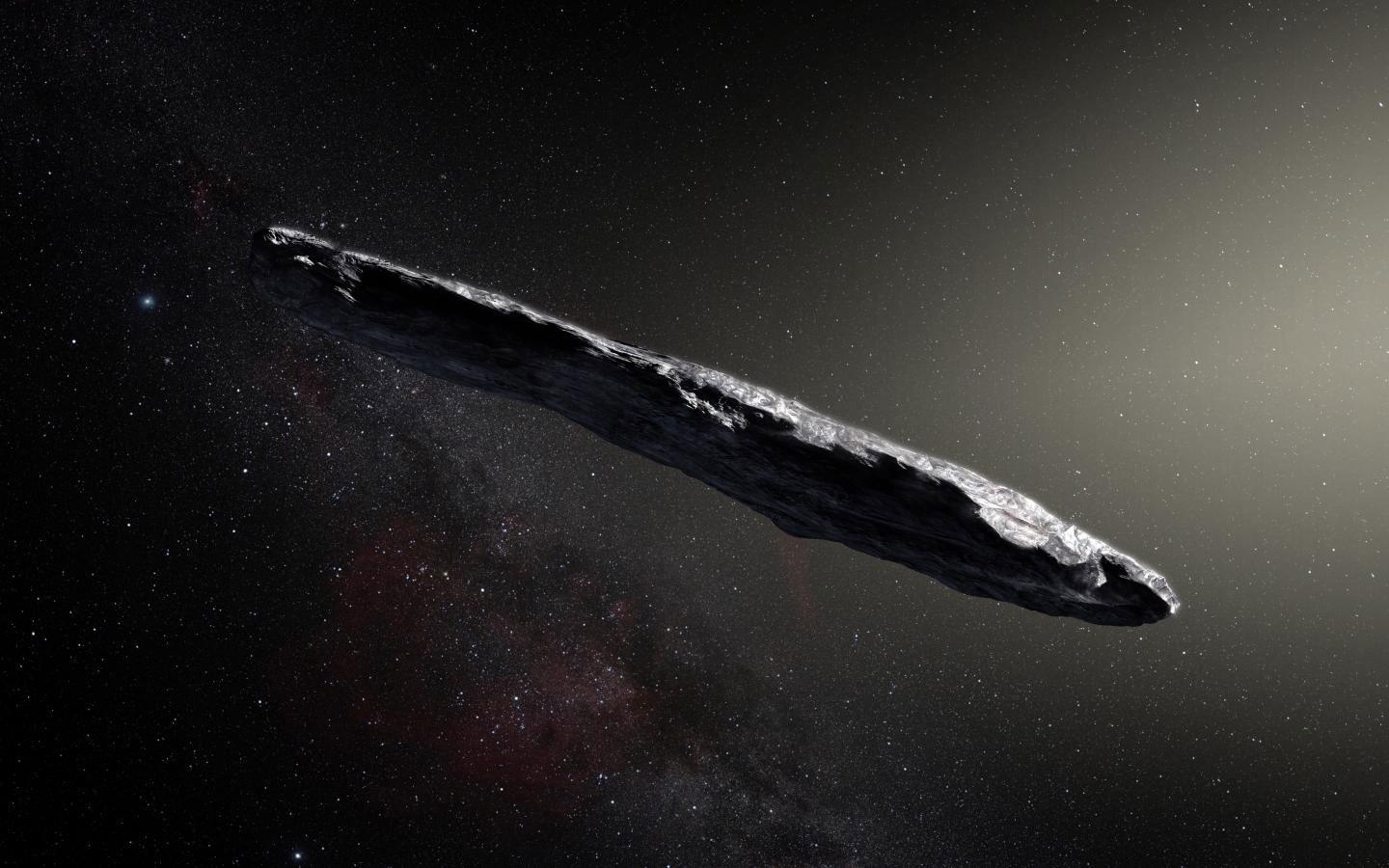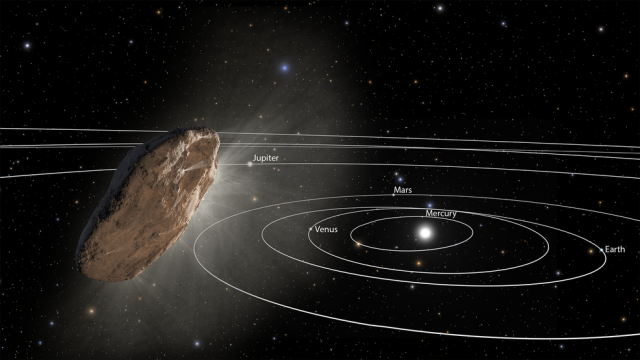This item was published on the 23rd April, 2018 on the SETI website
Tabby’s Star is going through another weird dimming phase and the SETI Institute's Allen Telescope Array is monitoring it for signs of intelligent life.

Tabby's Star
By now you have surely heard that Boyajian’s star, aka Tabby’s star, aka KIC8462852, is going through another weird dimming phase. We do not have a satisfactory explanation for why Boyajian’s star sometimes dims by 20%, and many astronomers are monitoring the star with optical and infrared telescopes, hoping to learn more about this strange behavior. Likewise, the SETI Institute has shifted into gear using our own radio telescope, the Allen Telescope Array (ATA) to monitor Boyajian’s star for the presence of artificial radio transmissions that could reveal a civilization like ours in that system.
Backing up a bit, remember that Boyajian’s star was discovered in data from the Kepler space telescope and shows the most unusual “dimming” of a star ever observed. From time to time, the light from this star is blocked by some enormous quantity of material moving between the star and our telescopes. But this material is unexpectedly cold and does not give off the infrared radiation expected if it were orbiting the star in a relatively close orbit. This mysterious material is too big and too cold to be explained by a typical orbiting planet, and some scientists have wondered if we could instead be observing a giant structure built by an advanced civilization. For example, a huge megastructure is just what you would need to capture an enormous quantity of stellar energy to power massive engineering projects. Even more interesting, the timing of the present dip suggests that whatever this material is, it is situated at just the right distance from the star to be in the “habitable zone,” where we believe that life like ours could develop as it has on Earth.
So, last Thursday, as soon as we heard Boyajian’s star began another dimming phase, the SETI Institute reacted quickly and pointed our ATA toward that star with hopes of catching a tell-tale signal that might reveal a technological civilization. Using the same methods as in our previous study of the star (http://iopscience.iop.org/article/10.3847/0004-637X/825/2/155), we are making very deep and careful observations for signals that appear to be artificial – signals that could be generated by no known natural process.
This story is still unfolding, and it may be weeks before we can definitively state the results of our observations, so stay tuned. I promise that if we find something interesting, we won’t keep it to ourselves.
Not everyone understands what is going on. Technical papers are fine but they are written for those in the field and not for general members of the public. This is a problem that, at times, the rather stuffy field of astronomy, tends to forget. Those organisations receiving public monies ought to really be simplifying things so that "space sails" and "Dyson Spheres" are at least understood.
I can find no update on the SETI site itself but Sky & Telescope , in June, featured an item by Monica Young https://www.skyandtelescope.com/astronomy-news/tabbys-star-dust-complicated/
What’s Going On with Tabby’s Star? It’s Complicated
Two new studies — one by a group of high school students — are investigating the strange environment around Tabby's Star.

This illustration depicts an uneven ring of dust orbiting KIC 8462852, also known as Boyajian’s Star or Tabby's Star.
NASA / JPL-Caltech
NASA / JPL-Caltech
Once again, KIC 8462852 (aka Tabby's Star or Boyajian's Star) is proving how difficult it is to observe a strange system from afar.
This is the star made famous for potentially hosting alien megastructures. Observations have since firmly ruled out that option, but that aliens were mentioned at all shows just how weird the star is.
Tabby’s Star dips in brightness — sometimes by just 1% and sometimes by up to 20% — over days or weeks, before recovering to its previous luminosity. Yet it's fading too, over longer timescales of years and even decades. Dust explains the short-term dips, but new research shows that the long-term fade could be due to something else entirely.
Tabby's Star: Update
After the discovery of Tabby's Star's strange behavior, astronomers began monitoring the star for variability. When the star's brightness began dipping again last year, observatories around the world joined the monitoring campaign, catching four dips that together are dubbed the "Elsie" family (a play on "LC," short for "light curve"). The other three dips in the family are nicknamed Celeste, Skara Brae, and Angkor; the names are part of the Kickstarter project that funded the observations
Now, two new studies presented at the meeting of the American Astronomical Society in Denver investigated the nature of the dust that’s causing the short-term dips. Both studies compared the dips in different wavebands. As expected from a previous study, the dips are deeper at bluer wavelengths. That’s because it's dust that’s blocking the star’s light — it scatters away the bluer light while letting the red light pass through. (You can see a similar effect at sunset, when the Sun reddens as its light passes through more atmosphere.)
The dips' wavelength dependence was already known, but the two teams took a closer look at the data. A pair of rising seniors at Thacher School in California, Yao Yin and Alejandro Wilcox, presented results regarding the fourth dip seen in 2017, named “Angkor.” They found that the dust grains causing this dip were similar to dust found in the interstellar medium — tiny grains akin to campfire smoke more so than the dust you find in the corners of your house.
Another team led by Eva Bodman (Arizona State University) found similar results for all four dips. The small grain sizes, she says, mean that the dust was newly created — the star’s radiation would have quickly pushed the smoky dust out of the system, so it can’t last long.

These graphs presented at the American Astronomical Society meeting in Denver show the recent dips in the brightness of Tabby's Star, dubbed "Elsie" (pink), "Celeste" (yellow), "Skara Brae" (green), and "Angkor" (purple). The solid black line in the plot at left shows that the continuum level also appeared to decrease by about 1% during this time period. At right, the plot shows the colors that Bodman measured by comparing the amount of light arriving at different wavelengths (left vertical axis) and the grain sizes that these colors correspond to (right vertical axis). The grain size appears to vary from dip to dip but remains small, typical of the tiny smog-sized particles found in the space between stars.
Eva Bodman
Eva Bodman
Bodman also found that the grain size actually changed slightly between dips. “The dust in the cloud isn’t varying in time,” she notes. “We are seeing different parts of the cloud as they cross in front of the star.” That's intriguing — are we seeing the remnants of asteroids of different compositions? Or perhaps a combination of asteroids and comets?

This artist’s concept shows a swarm of comets passing before Tabby's Star, an explanation that hasn't been ruled out just yet.
NASA / JPL-Caltech
NASA / JPL-Caltech
Because the small grains won't last long in this system, it's not surprising that both teams found that the dust that’s blocking starlight over the short-term bears no resemblance to whatever’s causing the star to fade over the course of decades. The long-term change appears to be caused by much larger or denser dust grains that can withstand the star’s radiation pressure.
But what is the dust and where is it coming from? That’ll have to be a question for another day. While the action does appear to be happening near the star (rather than in interstellar space or in the outer solar system), neither team could speak to what the dust is made of, nor its origin — the observations just aren’t there yet. A more dramatic dip or simply more long-term observations at many different wavelengths will help clarify the story of Tabby’s Star.
~~~~~~~~~~~~~~~~~~~~~~~~~~~~~~~~~~
I know: it sounds as boring as a discussion on cricket (to non-cricket players). The problem is that if SETI is looking for signals then it has to focus in on what might be signals and then prove that it is or is not a signal. The same in this case and I do know there are those who totally dismiss the comet swarm theory.
The problem is that there are astronomers, some very well known ones, who in the past have shown an interest in UFO reports. When they have heard there is a class of report in which "whatever" is said to be behind these objects exists I have found myself having to explain the best (some of the best) reports and that can be tiring which is why I wrote UFO Contact?. There is usually a cross-examination in which I have to answer a lot of questions.
It all usually ends with something along the lines of "You get a very good report let me know!" There are astronomers out there who are well known and out-spoken on the subject of UFOs -in private Carl Sagan was very interested in UFOs but the "let's not rock the pay-cheque boat gets in the way.
In over 40 years I have met the occasional astronomer -amateur and professional: and I ought to point out that professionals tend to use a lot of data and observations from amateurs -just as zoologists tend to get a lot of their information from the lowly naturalist! Pro or amateur the first thing I tend to hear is: "I thought you'd be some kind of nutter but you seem quite sane!" I am never sure how to take that. But the chat starts and the interest is shown and I normally ask why (whoever) doesn't join me on an investigation and see what goes on. At this suggestion some go pale: "Oh my word no! What would my colleagues say?"
If we -and Science- were really looking for the possibility of extraterrestrial life then the close encounter cases is where they should be looking as well as out in space. Imagine if the Monterrey Bay Aquarium Research Institute or Ocean Exploration Trust took the word of the Victorian and Edwardian scientific elite that nothing was going to live below a certain depth. If you check out their videos on You Tube you will see the oceanographic discoveries -the new species and so much more including live broadcasts from the sea floor. No marine scientist is going to dismiss the possibility of a large previously unidentified sea creature in Earth's waters -if anyone wants to find such a species they do!
The same applies to SETI/CETI -unless those involved are completely self-obsessed job-worth's then they should not be sticking their noses in the air at the sound of the word "UFO".
I have maintained for 40 years that any investigation team ought to include an astronomer and, depending on the report, a psychologist. A team of "UFO believers" will nearly always come up with details that suit their theories and that does not necessarily mean the actual truth.
If there were the financial backing then several such teams -or one that could be on permanent standby- could be set up. Astronomy, like Ufology, needs to sort its act out. It needs to show that it is abiding by the principles of Science, as ufologists should. Astronomers should also try to be less technical and stand-offish because that attitude creates the crazed speculation seen after the New Mexico Solar Observatory was closed and other incidents.
A simplified breakdown on Tabby's Star might also spread less confusion amongst the interested public whose main sources (You Tube and UFO pages) are telling them how NASA, SETI/CETI are covering up on signals received and aliens contacted.
Yes, I know I am talking to myself!












